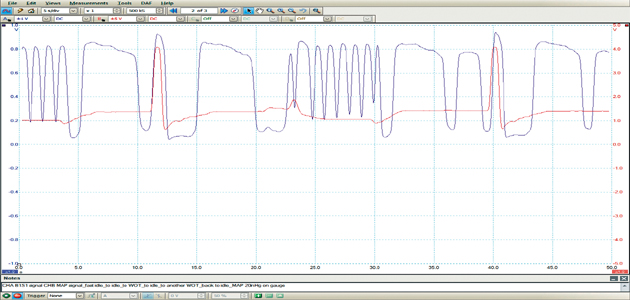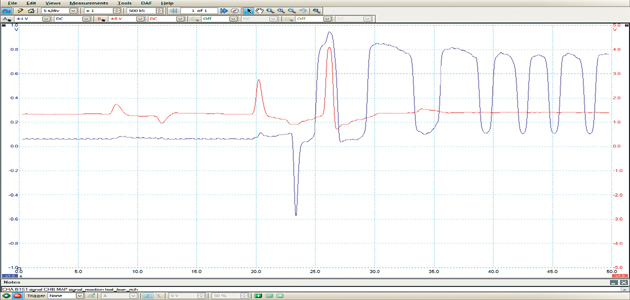
- VEHICLE DETAILS: Rover 45
- ENGINE CODE: K16
- YEAR: 2004
- SYMPTOM: MIL illuminated, no running issues
This car came to us with the MIL (Malfunction Indicator Lamp) illuminated, but no reports of any running issues. The first action was to read the PCM (Powertrain Control Module) for the stored code(s), but there was only one stored:
‘P0170 – Fuel system adaptions out of range’
The car was then road tested and live data, via a scan tool, was watched for any anomalies. One thing that stuck out was that the up-stream O2 sensor, with my foot hard to the floor on the throttle pedal, was hitting a clean 0 V. On return from the road test, I put a test plan together.
I started by checking the fuel pressure, which was on spec, and one thing I noticed at this point was it was still on its original fuel filter. The car was on its second owner from new and had low mileage for a 2004, so I therefore replaced it as a matter of course.
Turning to the PicoScope
Re-road testing after the filter change made no difference to the up-stream O2 sensor 0 V reading, so I contemplated checking fuel flow at this point, but I decided to hook the PicoScope up and see what was occurring with the O2 signal. The reasoning for not checking fuel flow was the car never hesitated or exhibited any lack of fuel symptoms.
The first capture I took shows the O2 sensor behaving normally (Fig 1 below).

(Fig 1)
After this capture, I then carried out a test, forcing the O2 sensor lean and rich. This is when the fault showed up (Fig 2 below).

(Fig 2)
As you can see in the trace, Channel A (the O2 sensor) clearly drops to sub-zero readings. It was clear now that I was looking at CSD (Characteristic Shift Down).
Characteristic Shift Down
This is where an oxygen sensor compares the residual oxygen content to an ambient air reference; it does this through the sensors wires. If the sensor ceramic cracks and the exhaust gas seeps through the crack, the reference side becomes contaminated.
The oxygen sensor will then start to work in reverse because the reference side will have less oxygen than the exhaust side, therefore, generating voltage in the opposite direction – this is seen as a negative voltage. The sensor can still switch, as the average voltage approaches zero and continue negative. This symptom can clear up of its own accord, but if the ceramic is cracked, the Characteristic Shift Down will no doubt return.
The fix
To overcome the problem a new O2 sensor was fitted. The car was then road-tested and the O2 sensor behaved as normal, hitting around 900 mV with the throttle on the floor.
Conclusion
This is another case where true real-time data is seen by the PicoScope compared to live data from a scan tool. As simple as this study may read and the outcome turned out, the PicoScope really gives diagnostics another dimension, and I wonder what the next step might have been without one!









